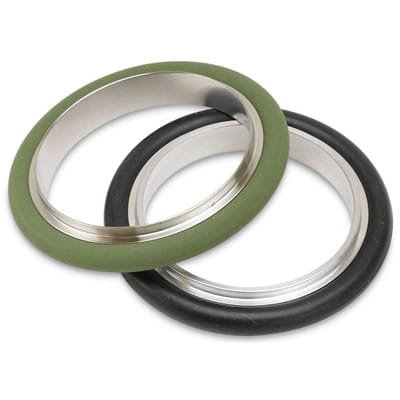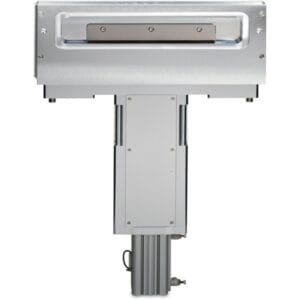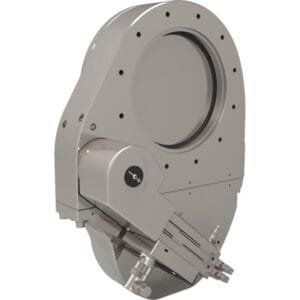KF (QF) HV Centering Rings (Al)
KF (QF) HV Centering Rings (Al) are essential components in vacuum systems, particularly for maintaining precise flange alignment and providing a reliable seal. Manufactured by TFM, these centering rings are made from high-quality aluminum, offering both strength and lightweight properties ideal for ultra-high vacuum (UHV) applications.
What are KF (QF) HV Centering Rings (Al)?
These centering rings are designed to be used with KF (QF) vacuum flanges to ensure that the flanges are properly aligned, facilitating a secure, leak-tight seal. The aluminum construction provides excellent corrosion resistance, making them suitable for high-vacuum environments that demand durability and consistent performance. These rings are highly effective in creating clean, stable connections between components in UHV systems.
Key Features of KF (QF) HV Centering Rings (Al)
Lightweight and Durable Aluminum Construction: Made from aluminum, these centering rings offer a combination of strength and lightweight properties. Aluminum’s resistance to corrosion makes it an excellent choice for use in demanding environments.
Leak-Tight Sealing: These rings ensure precise sealing between KF (QF) flanges, preventing any loss of vacuum pressure and safeguarding the system against leaks.
Compatible with Various Flange Sizes: KF (QF) HV Centering Rings (Al) are compatible with a wide range of KF flanges, including KF10, KF16, KF25, and KF40, making them versatile for different system configurations.
Enhanced Vacuum Performance: The centering rings help maintain vacuum integrity, minimizing contamination and ensuring long-term performance under extreme conditions.
Benefits of Using KF (QF) HV Centering Rings (Al)
Efficient Alignment: The centering rings ensure precise flange alignment, which is crucial for maintaining the performance of vacuum systems.
Corrosion Resistance: The aluminum material ensures these rings stand up to the challenges of high-vacuum environments, offering durability and long-lasting performance.
Improved Vacuum Sealing: These rings create a reliable, leak-tight seal, which is crucial for systems where vacuum pressure needs to be maintained.
Versatility: Due to their compatibility with various KF flange sizes, these centering rings can be used in a wide range of vacuum systems, including semiconductor equipment, vacuum pumps, and laboratory instrumentation.
Applications of KF (QF) HV Centering Rings (Al)
Vacuum Chambers: KF (QF) HV Centering Rings (Al) are commonly used in vacuum chambers to create a secure connection between chamber components.
Semiconductor Processing: In semiconductor manufacturing, these rings ensure proper alignment and sealing in high-precision vacuum systems.
Vacuum Pumps: The centering rings are essential for ensuring that vacuum pumps maintain proper seal integrity, allowing for consistent vacuum levels.
Laboratory and Research: These rings play a crucial role in vacuum systems used for scientific experiments and analytical instrumentation, where maintaining a clean, stable environment is essential.
Ordering Table
KF (QF) HV Centering Rings (Al)
Accessories Table
| Description | For | VacuCADSM | Part Number |
| O-Ring, KF10, Buna-N | QF10 Centering Ring | N/A | O-B312 |
| O-Ring, KF10, Fluorocarbon | QF10 Centering Ring | N/A | O-V312 |
| O-Ring, KF16, Buna-N | QF16 Centering Ring | N/A | O-B314 |
| O-Ring, KF16, Fluorocarbon | QF16 Centering Ring | N/A | O-V314 |
| O-Ring, KF25, Buna-N | QF25 Centering Ring | N/A | O-B320 |
| O-Ring, KF25, Fluorocarbon | QF25 Centering Ring | N/A | O-V320 |
| O-Ring, KF40, Buna-N | QF40 Centering Ring | N/A | O-B326 |
| O-Ring, KF40, Fluorocarbon | QF40 Centering Ring | N/A | O-V326 |
| O-Ring, KF50, Buna-N | QF50 Centering Ring | N/A | O-B330 |
| O-Ring, KF50, Fluorocarbon | QF50 Centering Ring | N/A | O-V330 |
| N/A | APMB |





Reviews
There are no reviews yet.